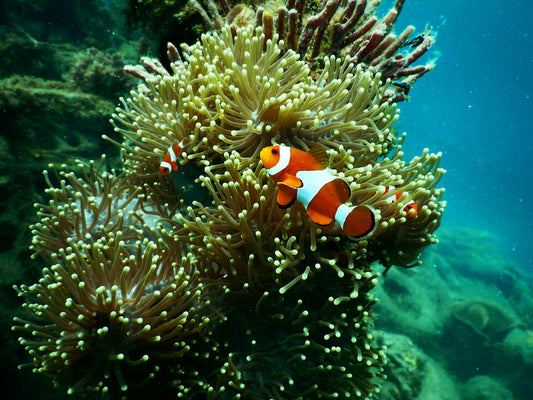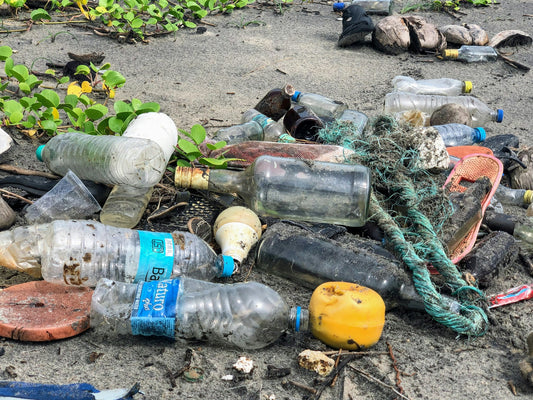Share
The issue of plastic pollution demands increasing attention from the media worldwide. And it should, because it is estimated that every day, some eight million pieces of plastic find their way into our seas and oceans.
When we hear of plastic pollution, we often think of bottles, straws, and other large items; however, a lot of the pollution is caused by small particles of plastic.
Depending on the size of the particles, these are sometimes referred to as either microplastics or nanoplastics.
While these two terms are often used synonymously, they are, in fact, two different categories of plastic pollution that have different properties and health concerns.
How Can Microplastics and Nanoplastics Be Defined?

Microplastics are plastics with sizes less than 5mm but more than 1µm. They are large and can be observed with the naked eye; they are present in oceans, rivers, soil, and even the air.
These include plastic microbeads used in cosmetic products, smaller pieces of oversized plastic items, and synthetic fibers used in apparel.
Nanoplastics, however, are defined as plastic particles with sizes below one micrometer. These particles are generally not easily seen with the naked eye and may need electron microscopy to be observed.
Because of their small sizes, they can cross biological membranes and present several environmental and health issues.
But What are The Origins of These Plastics?
Primary Sources of Microplastics
Personal Care Products:
Microplastic pollution is prevalent in cosmetic products such as facial and body scrubs, toothpaste, lipsticks, and other makeup products.
These microbeads are meant to be washed off and frequently end up in water systems because they are not well filtered out in water treatment facilities.
According to a study, 4594 to 94,500 microbeads could be released in a single use from a personal care product such as Exfloiant.
Synthetic Textiles:
Wearing synthetic clothes can also release microfibers during washing, which is also considered a microplastic type.
These fibers are microscopic and enter water systems after passing through wastewater treatment plants. They are then discharged into rivers and oceans.
Degradation of Larger Plastic Items:
Large items like bottles, bags, and fishing nets, among others, can disintegrate into smaller items through physical, chemical, and even biological processes.
Other environmental factors, such as ultraviolet radiation and mechanical wear and tear, further compound this breakdown.
Primary Sources of Nanoplastics

Breakdown of Microplastics:
Microplastics can further disintegrate into even smaller particles, known as nanoplastics.
Microplastics degrade into smaller particles due to factors such as heat and light exposure and end up forming nanoparticles.
Manufacturing Processes:
Some industries produce nanoplastics during manufacturing or release them as a by-product of other processes.
These include the production of nanocomposites, coatings, and other products that incorporate nano-sized plastics.
Environmental Impacts
Marine Life:
Microplastics and nanoplastics have been discovered in the stomachs of marine organisms, including zooplankton, fish, seabirds, and marine mammals such as whales.
They can even act as projectiles and inflict bodily harm, clog the digestive tract, and result in malnutrition.
Bioaccumulation and Biomagnification:
Microplastics and nanoplastics can absorb and concentrate harmful pollutants from the surrounding water.
The toxins, once ingested by marine organisms when consuming these polluted particles, accumulate in their bodies.
When the predators eat these organisms, the toxins accumulate and become more concentrated in the higher trophic levels.
Habitat Disruption:
These small particles can change the physical attributes of some marine environments, such as beaches, sediments, and organisms found in these regions.
For example, microplastics affect the physical and chemical characteristics of sediment, which in turn influences benthic organisms.
According to Ellen MacArthur, the quantity of plastic washed into the seas will surpass the weight of fish by the middle of the century.
Health Impacts of Microplastic and Nanoplastic
We've dedicated a whole article on the scary impacts of microplastics on the human body.
While research on the issue is still being ehanced, plastic can cause many diseases and medical conditions.
Especially the toxic chemicals that leach plastic can have severe consequences.
We hope you enjoyed this article. If you want to read more like this, make sure to check out our Blog and follow us on Instagram. If you are interested in truly sustainable products, check out our Shop.
Did you know microplastics and nanoplastics are actually different? Leave a comment below and engage in the discussion!








